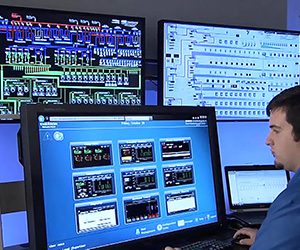 In the last decade or so, video surveillance has become a ubiquitous tool in security systems across an enormous array of markets. Networked security cameras are deployed by municipalities, in public spaces, and throughout businesses and organizations ranging from hospitals and churches to manufacturing, retail and corporate offices. Of course, the most obvious benefits of surveillance systems are that they create a deterrent to criminal activity and that they help to identify perpetrators once an act has been committed.
In the last decade or so, video surveillance has become a ubiquitous tool in security systems across an enormous array of markets. Networked security cameras are deployed by municipalities, in public spaces, and throughout businesses and organizations ranging from hospitals and churches to manufacturing, retail and corporate offices. Of course, the most obvious benefits of surveillance systems are that they create a deterrent to criminal activity and that they help to identify perpetrators once an act has been committed.
But in this age of heightened security concerns, end users are demanding more of their systems, and there is a new value placed on data collection and analytics. With over 240 Million cameras in use worldwide, there is a rapid push by manufacturers to include both forensics and actionable data to meet customer demands. In a recent article on SecurityInfoWatch.com, Hitachi’s Justin Bean, Director Smart City Marketing, says:
“For a long time, we have been able to see video as a source of images and eyes on the street if you will. It allows us to see what is happening. But with the advent of things like computer vision and machine learning, we are turning this video data into insightful and actionable data1.”
Some of the data available from current surveillance systems includes the ability to evaluate crowd flows and analyze vehicular traffic patterns and types of vehicles. Movements of suspicious vehicles can be analyzed, and through machine learning and artificial intelligence, systems will be able to use video of previous incidents to create profiles of threat behavior and be on the lookout for matches in real time. There is also facial recognition software that can trigger alerts if matches with individuals on watch lists are found.
Similar to the way online tracking software helps website owners analyze movement and interaction on their websites, there are also camera based tracking systems deployed in retail locations that can analyze customer movement and interactions to determine likelihood of theft or other criminal activity. Mr. Bean also mentions that, in addition to proving data for security, retail camera systems can also provide business intelligence on shopper behavior and buying patterns, and may well help store owners with product placement and store design. Again, this is not really all that different from what is happening online.
Many of these systems are still in development, and deployment and efficacy will only increase as the technology improves and prices come down. The real benefits of combining machine learning and data collection only occur after a sufficient amount of information has been collected and can be compared to previous video and data sets of actual security incidents. Like humans, machines learn by memory and comparison followed by making educated assumptions and then testing for accuracy.
As expected, this all raise concerns about privacy. Facial recognition and vehicle tracking are particularly sensitive areas, but it may well be the price we have to pay to be safer in this volatile time.
1 Lasky, Steve; The Implications of Analytics, Security Info Watch, Mar. 2017 http://www.securityinfowatch.com/article/12314433/the-implications-of-analytics
